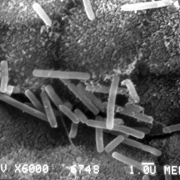The need to improve in vitro testing of future probiotics
By Prof. Gabriel Vinderola, Instituto de Lactología Industrial (INLAIN, UNL-CONICET), National University of Litoral, Argentina and Prof. Seppo Salminen, Functional Foods Forum, Faculty of Medicine, University of Turku, Finland
In a recent review we compared the in vitro tests for probiotics to the in vivo studies to observe if correlations exist.
Lactobacilli and bifidobacteria have been traditionally accepted as probiotics with the basis of their long history of safe use and reported benefits. However, new species, some of them never previously consumed, are being proposed as probiotic candidates. Some basic tests have been suggested for probiotic candidates, but there is a lack of standardized in vitro protocols for the selection of new strains of probiotics. Additionally, safety assessment of new species may have to cover aspects never hitherto considered.
Vinderola and coworkers reviewed the common in vitro selection tests such as exposure to low pH and bile salts, adherence to intestinal mucus or cell lines and prokaryotic-eukaryotic co-cultures that have been traditionally used to predict the functional properties of probiotics. At the end, the correlation of in vitro results with in vivo performance remained ambiguous. This poses challenges to research as newly proposed probiotics include often novel species never hitherto administered to humans.
The question of safety has been handled by the European QPS system and the US GRAS notifications but questions on efficacy, particularly concerning health claims, would benefit from predictive in vitro tests. These appear to predict more technological properties than safety and efficacy or health benefits.
New standardized systems need to be developed along with detailed sequencing information to be able to predict novel probiotic properties before they are tested in expensive human intervention studies. If the predictive capacity of in vitro tests fails, many potential probiotics will be left on the way from the laboratory to the application in humans and animals.
The lack of standardized protocols for in vitro and in vivo studies hampers comparison of the potential of new species and strains. There is thus a need to conduct selection of potential probiotics in a more robust manner and to focus on well-defined in vitro and in vivo (animal) studies able to predict health benefits that must still be confirmed in human interventions studies with the smallest possible error margin.
For additional perspective on this issue, see blog by Dr. Mary Ellen Sanders: Probiotic Screening: Are in vitro Tests Informative?
Reference: Vinderola G, Gueimonde M, Gomez-Gallego C, Delfredico L, Salminen S. Correlation between in vitro and in vivo assays in selection of probiotics from traditional species of bacteria. Trends in Food Sci Tech 2017: 68:83-90.





